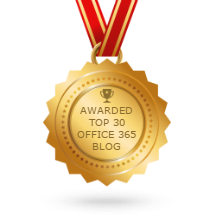Introduction
Businesses and Communications are going international. Every Country has its own native Language containing their native script.How to communicate with the one who understands other script or language?
As we are well aware that much of the software programs do not support Characters other than Upper case and Lower case English Letters, Some Special Characters, and Currency Signs. This is due to the 256 Characters set limit for such platforms.
Overcoming the barrier, Microsoft Outlook found its solution and adopted a new platform to work. This platform was introduced with advanced options and the ability to work with multilingual environments and provides solution for the users who are Non-Native English speakers to interact with the script they are using. The new platform on which it works is called Unicode, developed by Unicode consortium, which has remarkably replaced ANSI over the time. Unicode provides users across the globe an opportunity to communicate in the native script they use.
Things to know about Character Sets:-
1. About ANSI:
ANSI was originated from ASCII. It was the extended version of ASCII. It used full byte structure, i.e. 8 bits to represent 256 different characters. It was the default character set supported in Windows 95 by all browsers, and was referred to as Windows 1252.
Character distribution in ANSI is as follows:-
1. 0-127 was the ASCII characters containing:-
Numbers,
Upper and Lower case English alphabets,
Some special characters and more
2. 128-159 were assigned for special symbols like
EURO (€),
Dagger (†),
Bullet (•), and more
3.159- 256 were assigned for mostly Latin word characters
2. About Unicode:
Unicode is the most advanced version of characters in use these days. It was developed for the reason of introducing new characters on Outlook platform. Unicode came into existence because character sets used in ANSI were limited and were not compatible with multilingual environments. Therefore, the Unicode Consortium decided to develop and introduce a new advanced character set which can support multilingual environment.
It provides a unique number for every character, without being affected by the platform, program, & language. The number of characters in Unicode according to Wikipedia data is 109242 at present, which also contains some PUA (i.e. Private Use Area), Control codes, and Encoded characters.
To see the Unicode Character map, given are the steps one should follow:-
1. Go to Start
2. Click on Search Tab
3. Type Charmap
4. A window will appear showing all the characters in the Unicode Character map.
.
3. Comparing ANSI and Unicode:
1. ANSI is an outdated character encoding system but Unicode is the most advanced standard until present.
2. For different languages, ANSI uses four different pages while in Unicode it is done in one only.
3. For encoding, ANSI uses fixed width while both fixed and variable width are used in Unicode
4. Programs supporting ANSI can work on computers both; of the Older and Newer Versions while Unicode programs are not compatible Older systems.
5. ANSI programs work slower than Unicode programs on new computers.
Scenario
Consider that, two people are running different versions of languages. The first one is using English version of the Windows 7 OS with the Latin code page and the second one is running the Chinese version of the Microsoft Windows 7 Operating System with the Chinese code page. The Chinese one creates a meeting request in the Chinese version of Microsoft Outlook 2002, i.e. version 10 with Chinese characters in the Location field and sends it to the English person. When the person using the English version of Outlook opens the meeting request, the code points displayed in the Chinese code and page, are mapped to be displayed in an unusual characters set in unexpected or nonexistent script. Therefore, it does not make any sense. Therefore, it has adopted a platform to interact and communicate with the Client in their respective language form.
Evolution of Outlook from ANSI to Unicode:
As we analyzed above, Unicode is the most advanced platform in use today and most of the programs have shifted from ANSI Character to Unicode Character format. Therefore, Microsoft Office tools also decided to shift its character code format to Unicode from ANSI. This led Microsoft Outlook platform to work on multilingual file formats. This allows users to interact and communicate in their native language and overcomes language barrier. If user has to share messages and information with people using Outlook working in different countries or region, then Microsoft Outlook has provided them with the feature so that they can take advantage of Unicode support in Outlook.
Creating a Unicode Personal Folder File (.pst):
1. Go to File menu.
2. Click on New.
3. Then click Outlook Data File.
4. Click the Personal Folders File for your Outlook Version.
5. Click OK.
6. Type a name for the file in the File name box
7. Click OK.
8. Type a display name for the .pst folder in the Name box
9. Select any other options you want
10. Then click on OK.
The name of the folder associated with the data file is displayed in the Folder List.
View Folder List, on the Go menu
Click Folder List. By default, the folder will be called Personal Folders.
Conclusions:
The Unicode character-encoding standard enables the sharing of information and data in a multilingual environment.
An ANSI system uses a code page platform based environment, in which each script consists in its character table. Items based on the code page of one Operating System that rarely map well to the code page of another Operating System. However, in Unicode platform everything is done in one page, which concludes to the fact that Microsoft Outlook has provided a great feature and adopted a character code format so that every user can connect with each other in a quite simple way.



















0 comments:
Post a Comment